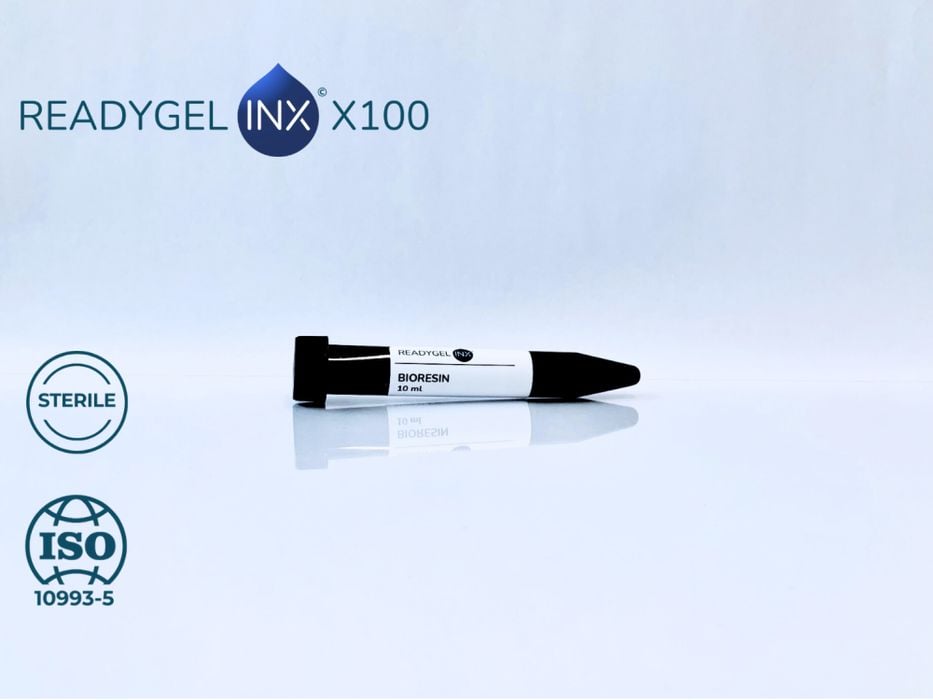
What could be the first commercial material for volumetric 3D printers has just been announced.
Volumetric 3D printing is a revolutionary new approach to 3D printing that is essentially “reverse CT scanning”. The idea is to rotate a cylinder of clear resin, while projecting light patterns into the resin. Instead of printing layer by layer, the object forms “all at once”, and can be completed in unbelievably fast jobs.
We witnessed volumetric 3D printing take place last fall, and it indeed can be extraordinarily fast.
In spite of the promise of volumetric 3D printing, it is still very new and has a long way to go. There are only a handful of companies developing volumetric systems for commercial use.
One of them is Readily3D, which offers a tomographic bioprinter, the Tomolite 2.0. This device is able to 3D print bio materials and hydrogels in a small build volume of up to 12.5mm diameter by 25mm tall. Remember that bioprints are typically quite small compared with mechanical parts made on conventional 3D printers.
These prints can be made very quickly: completion in only 30 seconds! That’s the benefit of the volumetric process.
The news is that Readily3D and BIO INX announced a new materials specifically designed for use in bio-Volumetric 3D printers like the TomoLite 2.0.
The material is “READYGEL INX”, is accompanied by print parameters to use on the TomoLite 2.0. Readily3D explains:
“By leveraging tomographic 3D printing, which rapidly solidifies photosensitive inks in three dimensions using shaped light beams from multiple angles, centimeter-scale biological systems with microscale resolution can be produced in mere seconds. Importantly, the light-based nature of this printing method ensures minimal shear stress on printed cells, with a low light dose (<600 mJ/cm²), making it exceptionally cell- and organoid-friendly.”
This is one of the first materials specifically made for volumetric 3D printers, and it certainly won’t be the last.
My hope is that material providers take on the challenges of developing additional materials for volumetric 3D printers, particularly the non-bioprinters. When materials are ready, operators follow.
